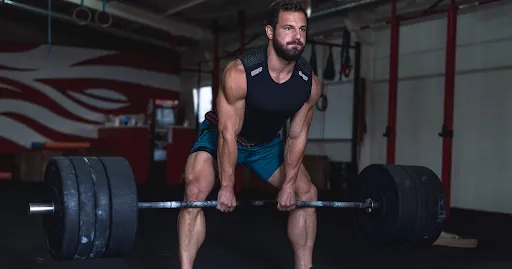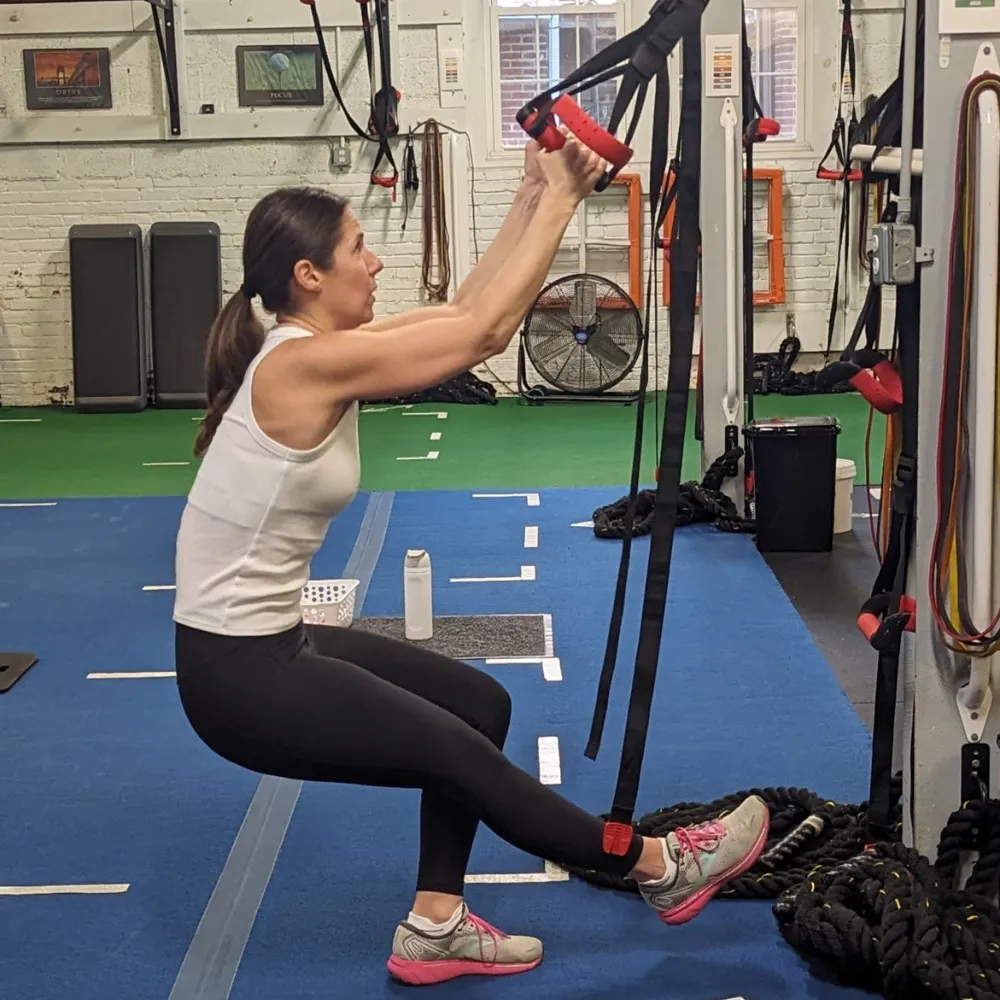PERSONAL TRAINING BLOG

Secrets to Long-Lasting Strength and Recovery for Fitness
Top Experts Reveal the Secrets to Long-Lasting Strength and Recovery
Blog Summary:
Unlock long-lasting strength and recovery with expert tips on training, nutrition, sleep, and more. Learn how to optimize workouts for peak performance in Havertown, PA, Drexel Hill, and Broomall. Visit Ultimate Wellness Lifestyle for personalized coaching
Feeling constantly drained, dealing with muscle fatigue, or struggling to stay consistent with workouts? Many people work hard at the gym but fail to see long-term progress due to poor recovery habits and ineffective training methods. Ignoring proper strength-building strategies and recovery techniques leads to burnout, injuries, and decreased performance. At Ultimate Wellness Lifestyle, we understand the challenges you face and bring you expert-backed strategies to help you build lasting strength while recovering effectively. Whether you're in Havertown, PA, Drexel Hill, or Broomall, this guide will help you stay on top of your fitness game.
The Importance of Strength and Recovery
Building strength isn’t just about lifting weights; it’s about creating a sustainable plan that enhances endurance, improves mobility, and prevents injuries. Strength training boosts metabolism, strengthens bones, and enhances daily activities. However, neglecting recovery can lead to muscle soreness, fatigue, and long-term damage.
Recovery is just as important as the workout itself. Muscles repair and grow during rest periods, not while lifting weights. Understanding the balance between exertion and recovery will help you achieve peak performance without setbacks.
Key Components of Effective Strength Training
Strength training is more than just lifting heavy weights—it requires proper planning and execution. Here are expert-backed strategies to build strength effectively:
1. Progressive Overload: The Foundation of Strength
The principle of progressive overload states that you must gradually increase weight, resistance, or intensity to challenge your muscles. Your body adapts to stress over time, so consistently pushing your limits ensures muscle growth.
Increase weights or reps slightly each week.
Avoid lifting the same weight for months without progression.
Track progress to stay motivated and see results.
2. Compound Movements: Maximize Efficiency
Compound movements engage multiple muscle groups simultaneously, making them ideal for building strength efficiently. Some key exercises include:
Squats (targets legs, core, and back)
Deadlifts (strengthens hamstrings, glutes, and lower back)
Bench presses (builds chest, triceps, and shoulders)
Pull-ups (engages back, arms, and core)
Including these in your routine leads to better overall strength and functional fitness.
3. The Role of Consistency in Strength Training
Many people quit too soon, expecting immediate results. Strength building is a long-term process requiring discipline.
Train at least 3-4 times per week.
Follow a structured workout program.
Stay patient—results take time but are worth it.
4. Nutrition for Strength Building
Your diet directly impacts muscle growth and recovery.
Protein Intake: Aim for 0.8 to 1.2 grams of protein per pound of body weight. Sources include lean meats, fish, eggs, and plant-based proteins.
Carbohydrates: Fuel workouts with complex carbs like oats, quinoa, and brown rice.
Healthy Fats: Essential for hormone production and muscle function. Include avocados, nuts, and olive oil in your diet.
The Science Behind Recovery
Recovery isn’t just about taking rest days. It’s an active process that involves proper sleep, hydration, mobility work, and stress management.
1. Sleep: The Ultimate Recovery Tool
Dr. Florence Comite, a precision medicine expert, highlights sleep as the key factor for muscle repair and overall health. (nypost.com)
Aim for 7-9 hours of uninterrupted sleep.
Deep sleep is crucial for tissue repair and hormone regulation.
Poor sleep leads to increased cortisol levels, which can break down muscle.
2. The Importance of Hydration
Water plays a vital role in muscle recovery.
Dehydration slows down the repair process and reduces workout performance.
Drink half your body weight in ounces of water daily.
Add electrolytes if you sweat excessively during workouts.
3. Active Recovery Strategies
Engaging in low-intensity activities helps reduce soreness and improves blood circulation.
Yoga enhances flexibility and relieves muscle tension.
Foam rolling releases muscle tightness and speeds up recovery.
Walking promotes circulation without stressing the muscles.
4. The Role of Nutrition in Recovery
Post-workout meals are crucial for muscle repair.
30 minutes post-workout: Consume a protein and carb-rich meal to replenish glycogen stores.
Magnesium-rich foods: Aid muscle relaxation (dark leafy greens, nuts, and seeds).
Collagen and Vitamin C: Improve joint health and tissue recovery.
Expert Insights on Strength and Longevity
Dr. Florence Comite’s research suggests three key habits for maintaining strength as you age:
Build Muscle Through Strength Training
Helps manage blood sugar levels.
Prevents muscle loss with age.
Monitor Blood Sugar Levels
Stable blood sugar improves energy and recovery.
Use tracking tools to optimize diet and workout performance.
Prioritize Sleep
Poor sleep can increase the risk of chronic diseases.
Deep sleep is essential for muscle repair and hormone balance.
How to Implement These Strategies into Your Routine
Step 1: Create a Balanced Workout Plan
Include strength training 3-4 times per week.
Mix in cardio and mobility work to enhance endurance and flexibility.
Step 2: Prioritize Recovery
Schedule rest days.
Optimize sleep and hydration.
Focus on nutrition that supports muscle repair.
Step 3: Listen to Your Body
Avoid overtraining and burnout.
Adjust intensity based on how your body feels.
Step 4: Seek Professional Guidance
If you're unsure where to start, consulting a fitness expert can help you create a personalized strength and recovery plan.
Find Expert Support in Havertown, PA
For those in Havertown, PA, Drexel Hill, and Broomall, Ultimate Wellness Lifestyle offers personalized coaching to help you achieve long-term strength and recovery. Whether you're a beginner or an advanced athlete, our experts provide tailored plans to maximize results safely.
Final Thoughts:
Achieving lasting strength and proper recovery requires consistency, knowledge, and balance. By implementing the expert-backed strategies discussed here, you’ll improve your performance, prevent injuries, and feel stronger every day.
Ready to take your fitness to the next level? Visit Ultimate Wellness Lifestyle today and start your journey toward sustainable strength and recovery.


ARE YOU READY TO INVEST IN YOUR HEALTH AND HAVE A BLAST AT ULTIMATE WELLNESS?!?!
IF SO, CLICK THE LINK BELOW TO LEARN MORE
15 B SOUTH EAGLE ROAD, HAVERTOWN, PENNSYLVANIA 19083
15 B SOUTH EAGLE ROAD,
HAVERTOWN, PENNSYLVANIA 19083
© 2025 Ultimate Wellness
|
|
© 2025 Ultimate Wellness

